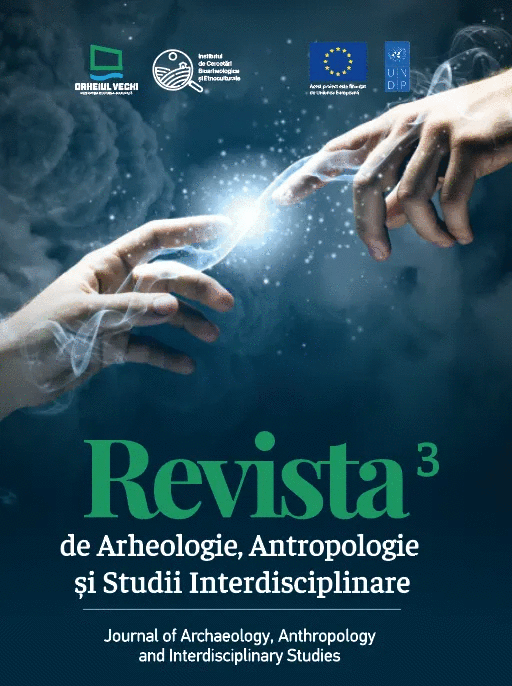Mormântul medieval Cx 872 descoperit pe varianta ocolitoare a municipiului Bacău, România
Mediaeval grave Cx 872 discovered on the highway of Bacău, Romania
Author(s): Ştefan Honcu, Angela Simalcsik, Alexandru Berzovan, Robert Daniel SimalcsikSubject(s): History, Archaeology, Modern Age, 17th Century, 18th Century
Published by: Bons Offices – Casa Editorial-Poligrafică
Keywords: Schineni;late Middle Ages;17th-18th centuries;burial grave;
Summary/Abstract: The aim of the paper is to present the late Middle Age features discovered on the highway of Bacău, located in the administrative territory of Schineni, at the point “La Izlaz”. The older discoveries are discussed, as well as those found during archaeological research on the surface of site no. 2. Besides three pit-houses with poor inventory, a burial grave has been discovered (Cx 872), which, most likely, is part of the necropolis of the old hearth of the settlement. The deceased was laid on the west-east direction, in supine position, with the upper limbs bent at the elbows and brought to the pelvic area. The skeleton, well represented, discovered in anatomical connection, in a precarious state of preservation in the cranial segment and good preservation in the postcranial segment, comes from a male individual, with biological age at the time of death of about 45-50 years. Its skeletal stature is medium, about 165 cm. Dental or bone abnormalities were not identified. Regarding the state of health, numerous pathologies have been identified. At the dentition we mention at least 12 missing teeth lost before death, and early periodontitis. Among the markers of infectious diseases and physiological stress we noticed the porotic hyperostosis (inactive), porosity on the zygomatics (healed), periosteal reactions (active) on the femora and tibiae and acute mastoiditis (active). Numerous osteoarthritic changes have been identified (on the lumbar vertebrae, on the glenoid surface of the scapulae and on the acetabular surface of the coxae). We also mention a series of musculoskeletal stress markers, such as: pronounced muscle insertions on the occipital, humerus and femur, femoral pilastry, femoral plaque, enthesopathic changes on the femora and calcanea, antero-posterior femoral diaphyseal curvature. From a taphonomic point of view, we recorded the exfoliation of some postcranial bones under the action of pedological factors and some reddish pigmentation on the diaphyses of the femora.
Journal: Revista de Arheologie, Antropologie și Studii Interdisciplinare
- Issue Year: 3/2021
- Issue No: 1
- Page Range: 369-382
- Page Count: 14
- Language: Romanian

